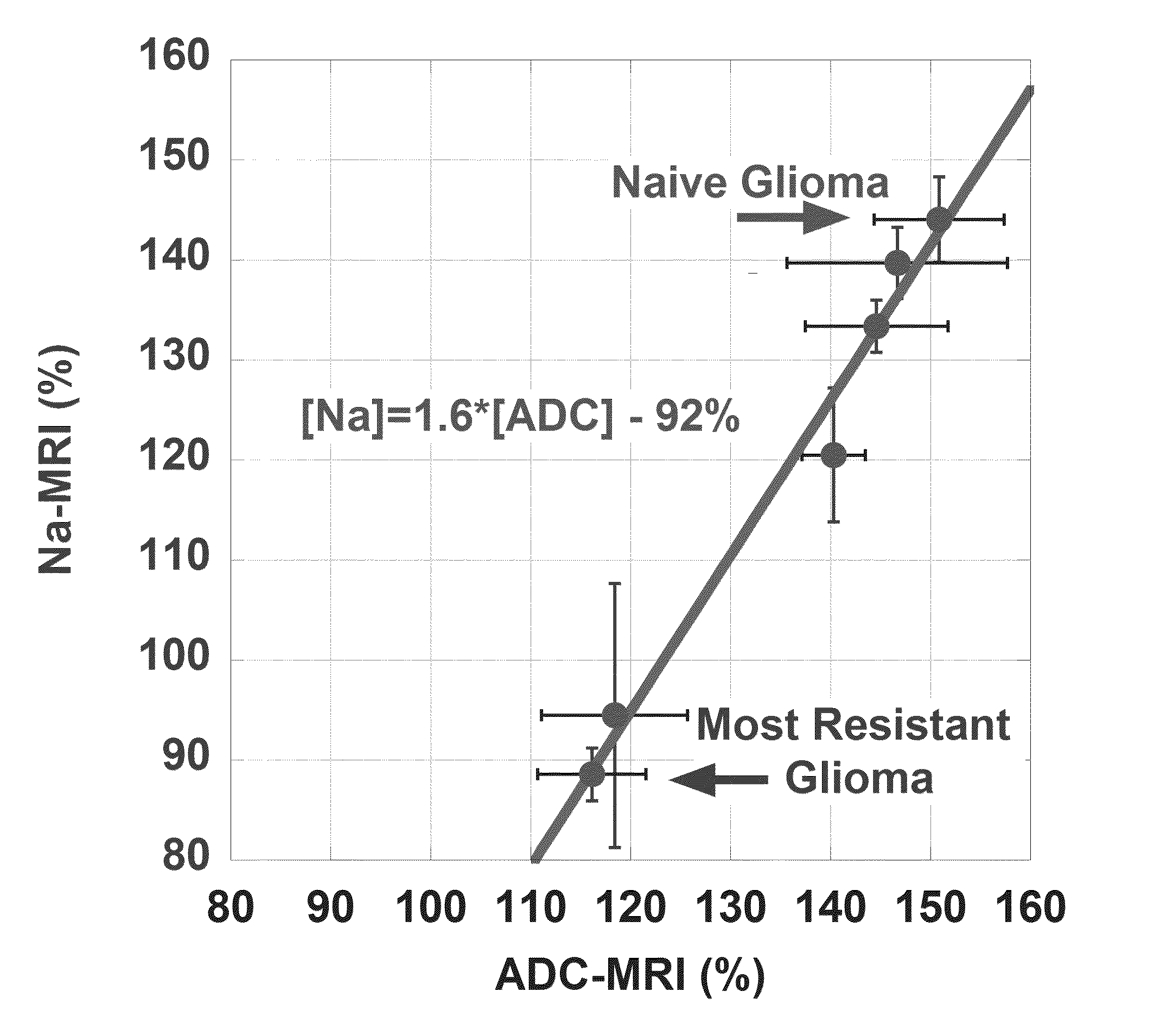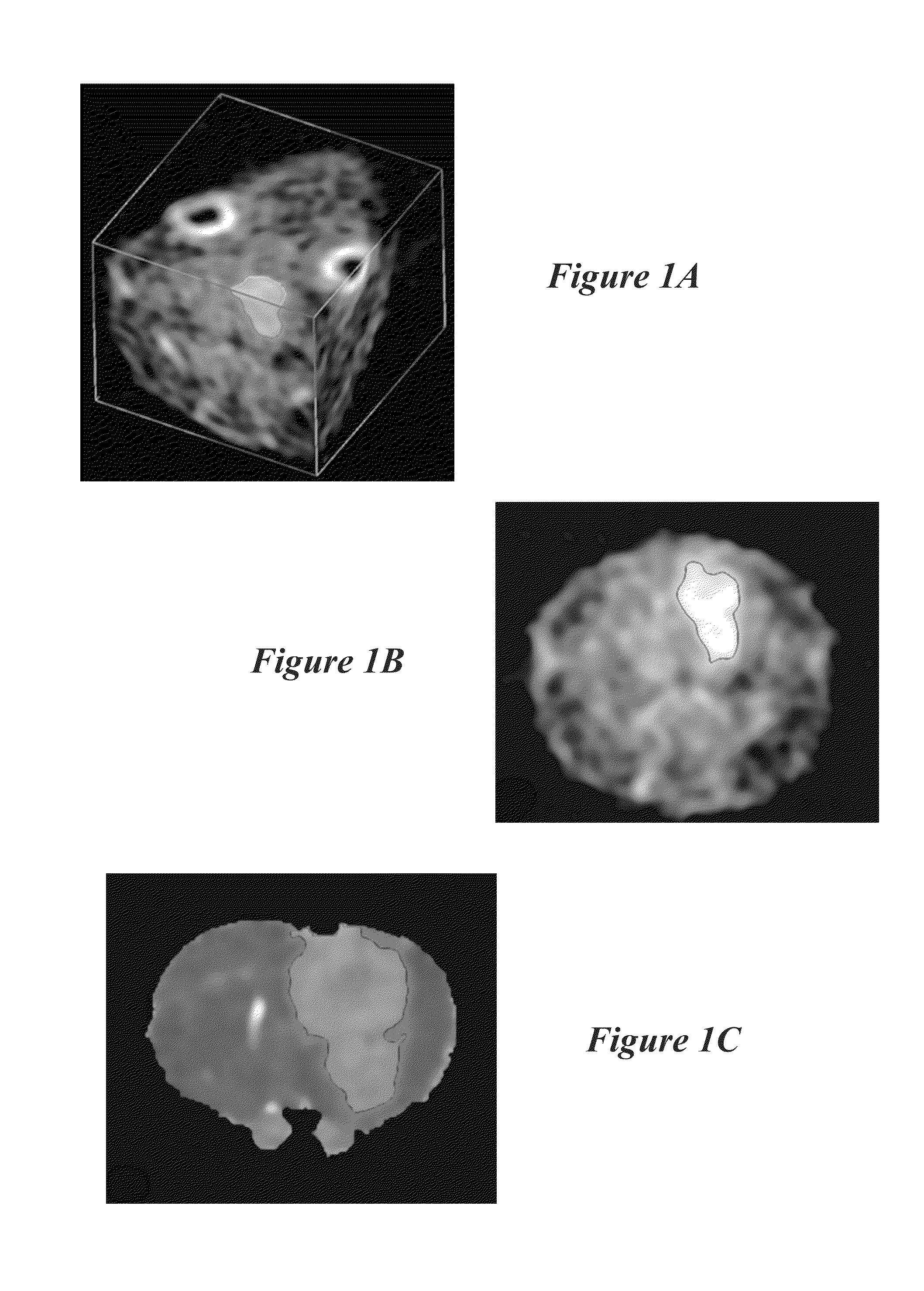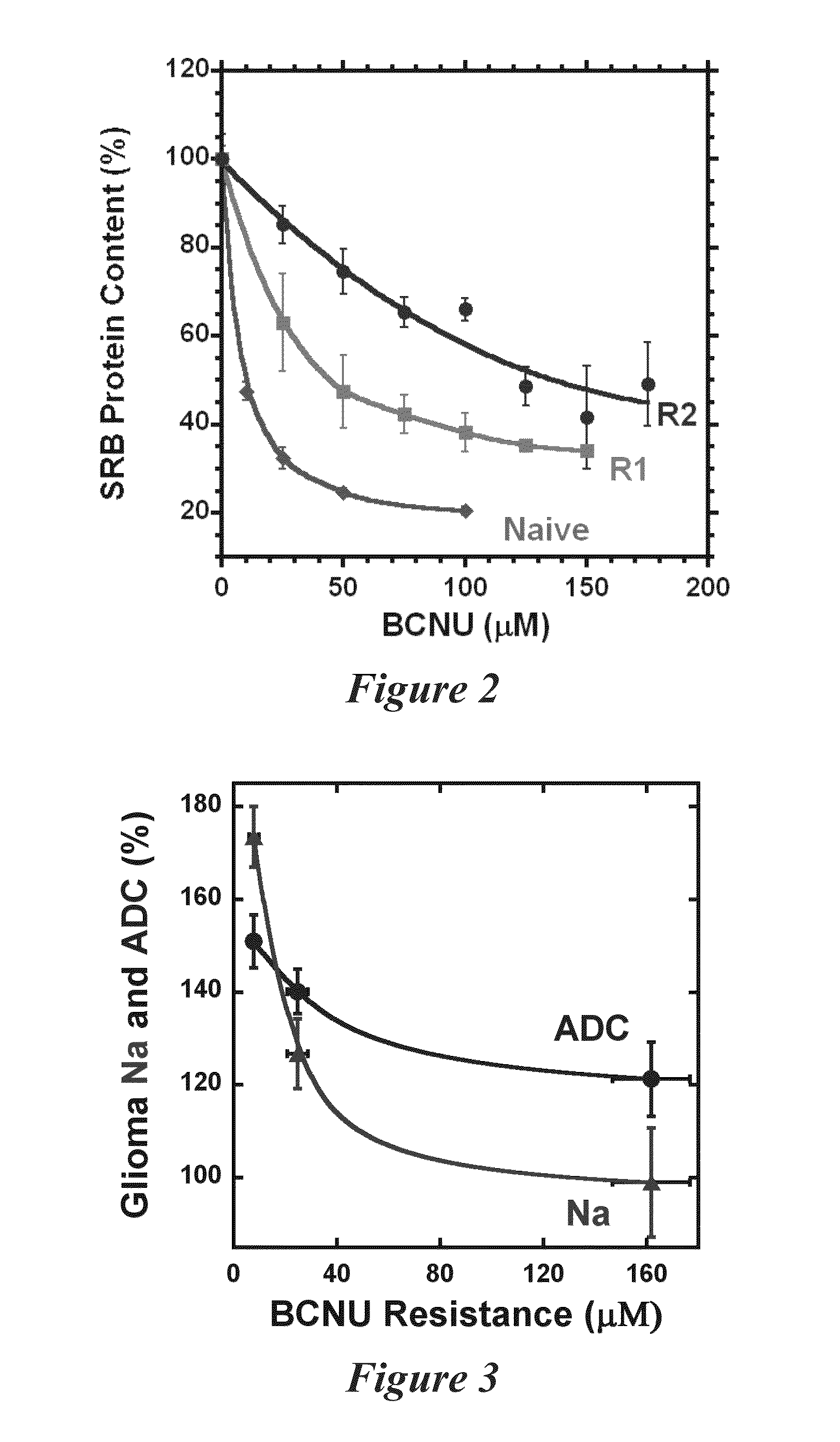Tumor resistance and sodium/ diffusion MRI
- Summary
- Abstract
- Description
- Claims
- Application Information
AI Technical Summary
Benefits of technology
Problems solved by technology
Method used
Image
Examples
example 1
[0055]A study was performed using ultra-short echo time for a sodium MRI to detect total sodium concentration in tumors. A high resolution sodium MRI, as depicted in FIGS. 1A and 1B, and diffusion MRI, as depicted in FIG. 1C, were achieved using a high magnetic field of about 21.1T (National High Magnetic Field Laboratory, Tallahassee, Fla.). A two-dimensional view of a slice of the sodium MRI is depicted in FIG. 1B. The slice was made through a central part of the rat glioma. A corresponding ADC map for the sodium slice, as depicted in FIG. 1B, is depicted in FIG. 1C and demonstrates the increased sodium content and diffusion values in the tumor relative to the surrounding normal brain. The areas of the glioma were selected by contour line.
[0056]A. Materials and Methods
[0057]Three sub-clones of 9L gliosarcoma cells with different resistance to BCNU were selected by using the In Vitro Toxicology Assay Kit (Sigma-Aldrich TOX-6) based on the sulforhodamine blue (SRB) method. Cell viab...
example 2
[0067]Energy metabolism in tumors is different from normal cells and it is a promising target in the treatment of cancer (DeBerardinis, R. et al. Cell Metabolism 2008, 7:p11; Vander Heiden, M. Nature Reviews, Drug Discovery 2011, 10:p671; Ramanathan A. et al. PNAS 2005, 102(17):p5992; Silver, I. et al. Neuroscience 1997, 78:p589; Gatenby, R. et al. Nature Reviews 2004, 4:p891; Bortner, C. Arch Biochem Biophys 2007, 462:p176). Tumors generally have higher sodium concentration than normal tissue; the sodium concentration can be detected by sodium MRI. Sodium concentration in glioma is not the same and its variation shows a remarkable correlation with glioma drug resistance (Schepkin, V D. et al. Proceedings of ISMRM, Melbourne, Australia, 2012, p. 184). Through the current experiment, it was thought that increased tumor resistance is determined by the energy metabolism shift that can be detected by a corresponding shift in sodium homeostasis. Diffusion may also follow the correspondin...
PUM
 Login to View More
Login to View More Abstract
Description
Claims
Application Information
 Login to View More
Login to View More - R&D
- Intellectual Property
- Life Sciences
- Materials
- Tech Scout
- Unparalleled Data Quality
- Higher Quality Content
- 60% Fewer Hallucinations
Browse by: Latest US Patents, China's latest patents, Technical Efficacy Thesaurus, Application Domain, Technology Topic, Popular Technical Reports.
© 2025 PatSnap. All rights reserved.Legal|Privacy policy|Modern Slavery Act Transparency Statement|Sitemap|About US| Contact US: help@patsnap.com



